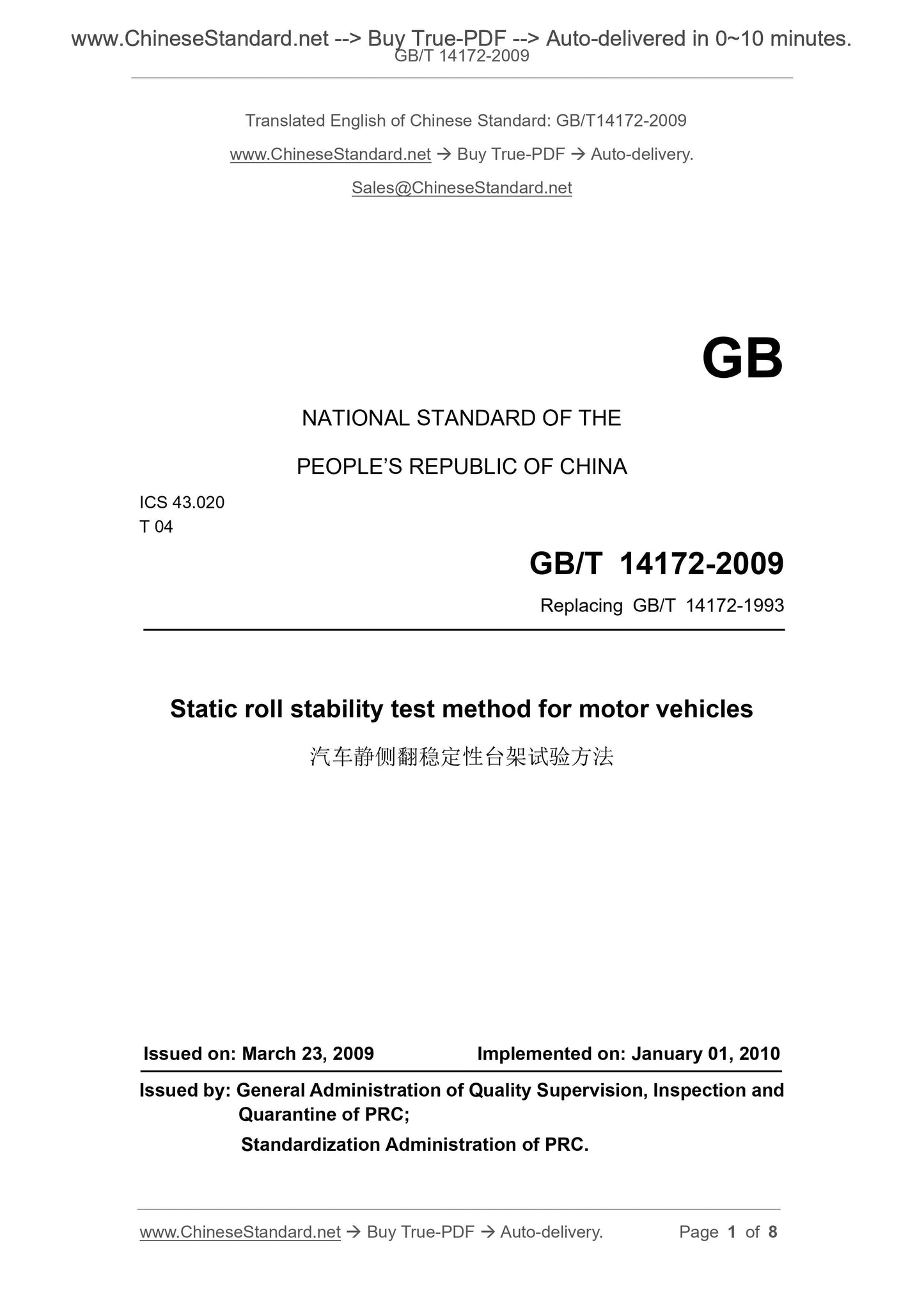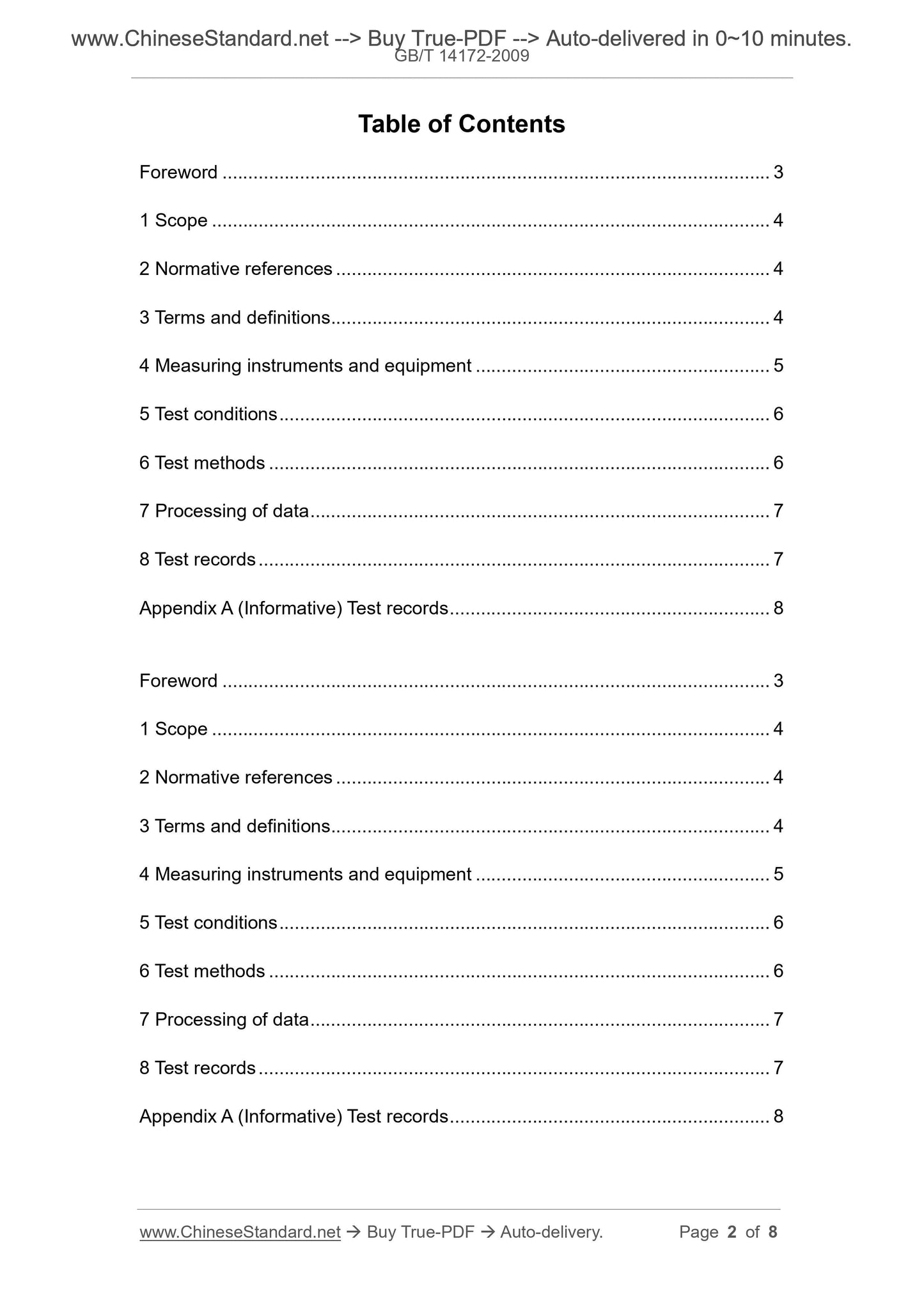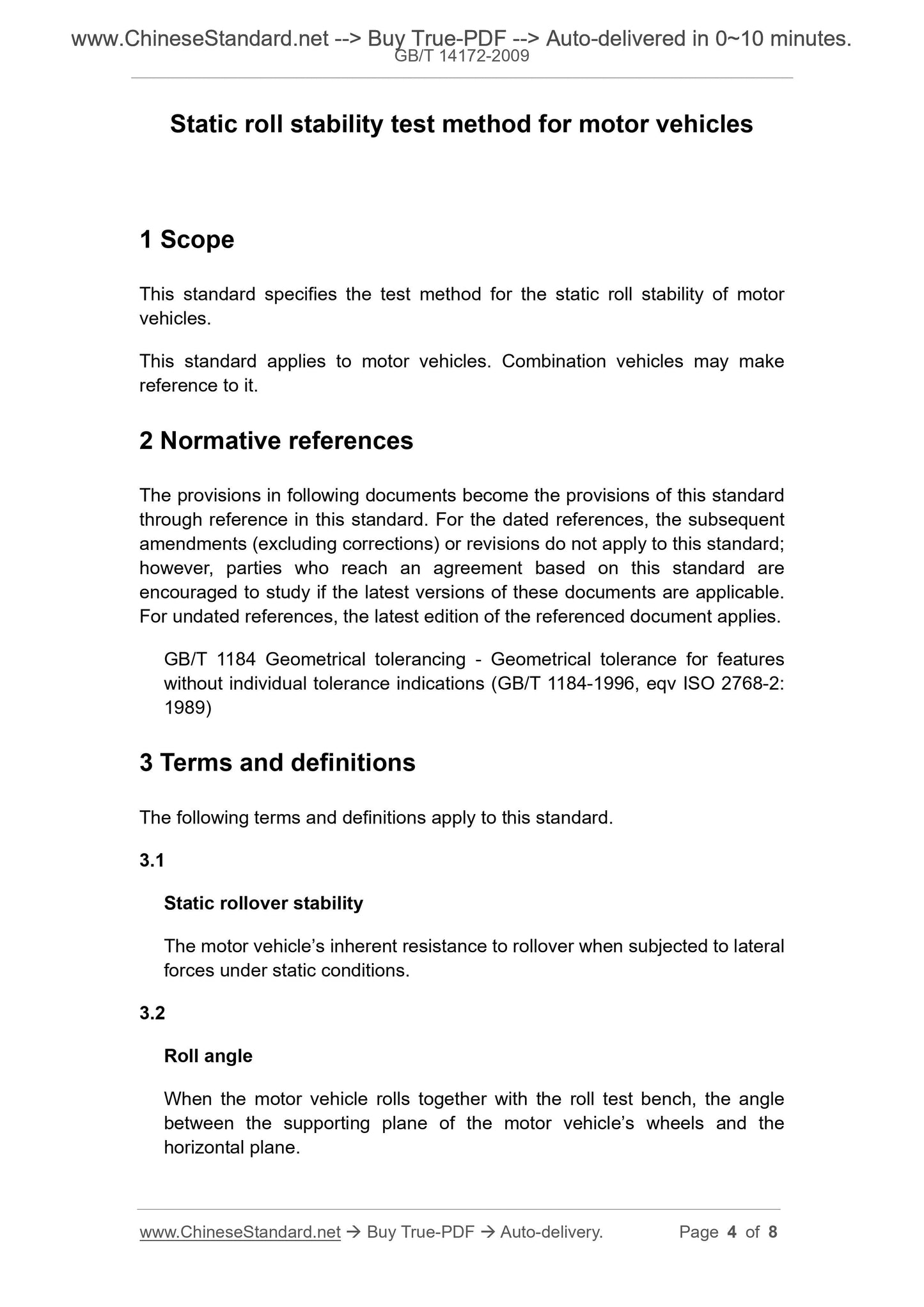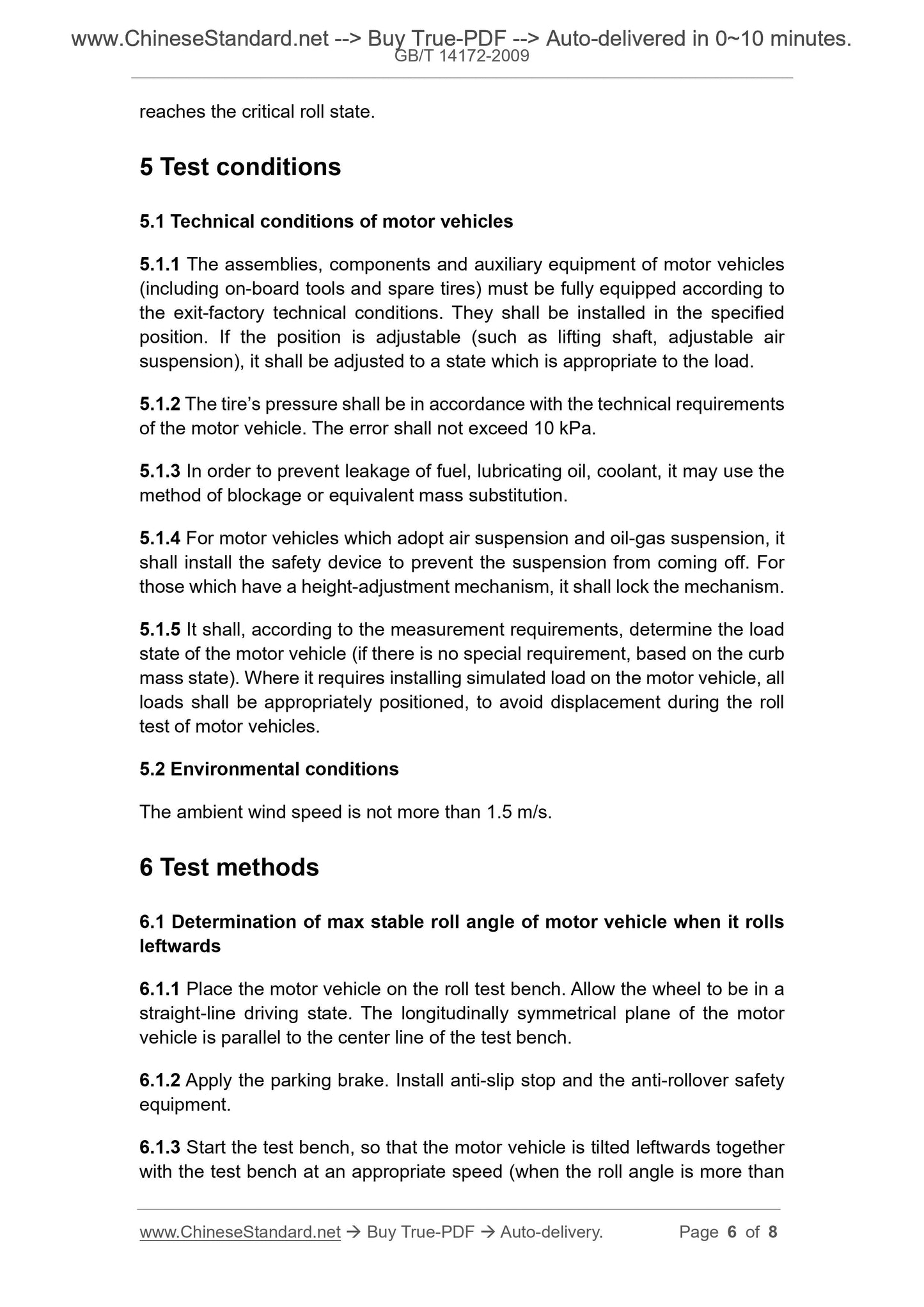1
/
of
4
PayPal, credit cards. Download editable-PDF and invoice in 1 second!
GB/T 14172-2009 English PDF (GB/T14172-2009)
GB/T 14172-2009 English PDF (GB/T14172-2009)
Regular price
$70.00
Regular price
Sale price
$70.00
Unit price
/
per
Shipping calculated at checkout.
Couldn't load pickup availability
GB/T 14172-2009: Static roll stability test method for motor vehicles
Delivery: 9 seconds. Download (and Email) true-PDF + Invoice.Get Quotation: Click GB/T 14172-2009 (Self-service in 1-minute)
Newer / historical versions: GB/T 14172-2009
Preview True-PDF
Scope
This standard specifies the test method for the static roll stability of motorvehicles.
This standard applies to motor vehicles. Combination vehicles may make
reference to it.
Basic Data
| Standard ID | GB/T 14172-2009 (GB/T14172-2009) |
| Description (Translated English) | Static roll stability test method for motor vehicles |
| Sector / Industry | National Standard (Recommended) |
| Classification of Chinese Standard | T04 |
| Classification of International Standard | 43.020 |
| Word Count Estimation | 6,668 |
| Date of Issue | 2009-03-23 |
| Date of Implementation | 2010-01-01 |
| Older Standard (superseded by this standard) | GB/T 14172-1993 |
| Quoted Standard | GB/T 1184 |
| Regulation (derived from) | National Standard Approval Announcement 2009 No.3 (Total No.143) |
| Issuing agency(ies) | General Administration of Quality Supervision, Inspection and Quarantine of the People's Republic of China, Standardization Administration of the People's Republic of China |
| Summary | This standard specifies the auto static rollover stability test method. This standard applies to cars. Car trains for implementation. |
Share







